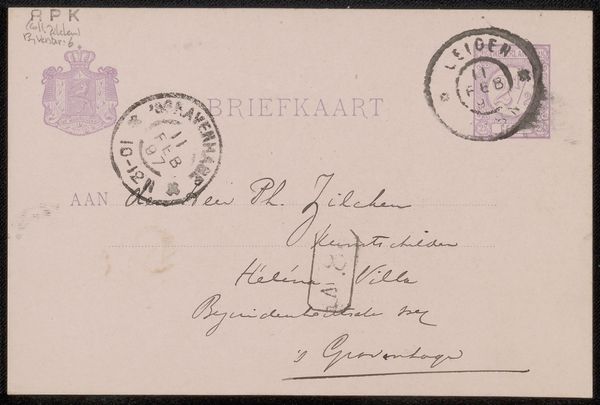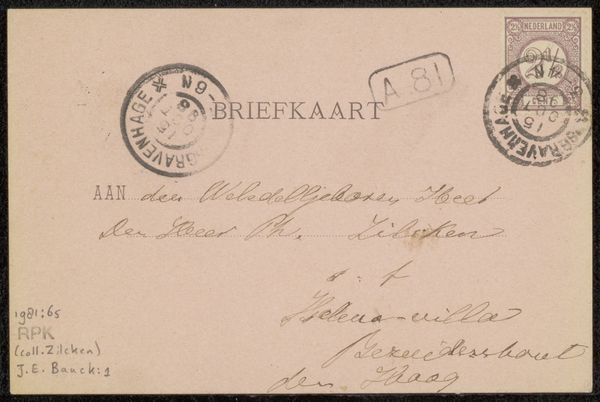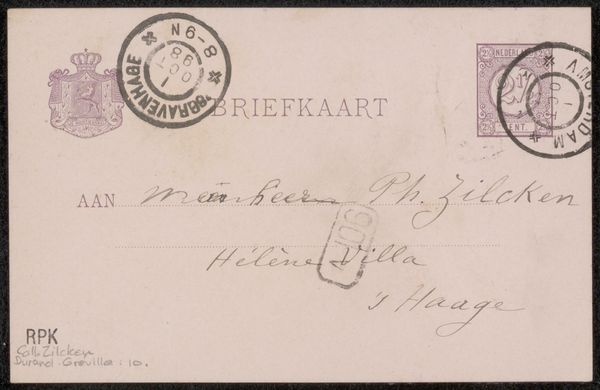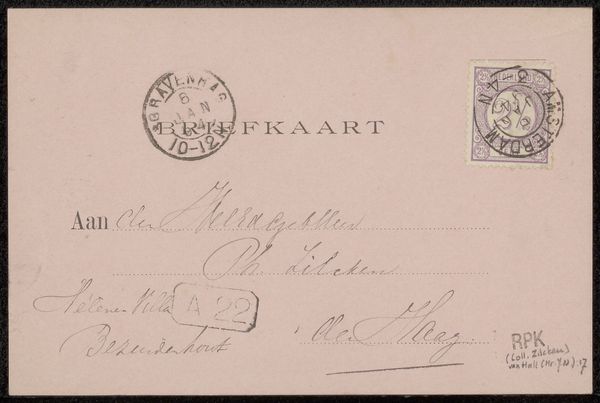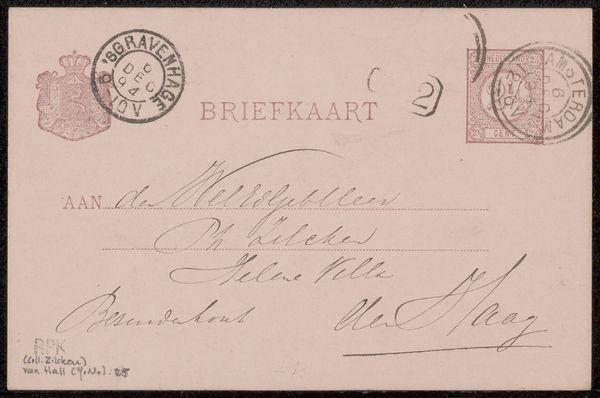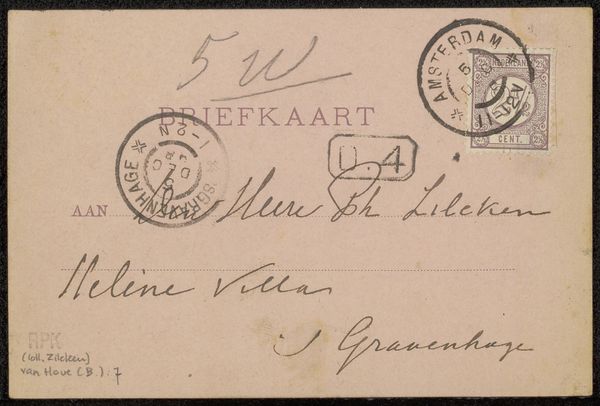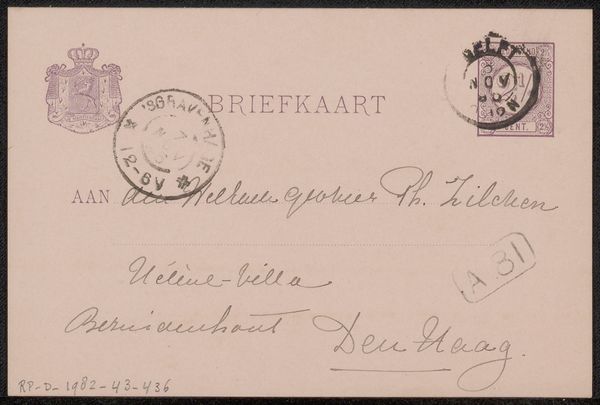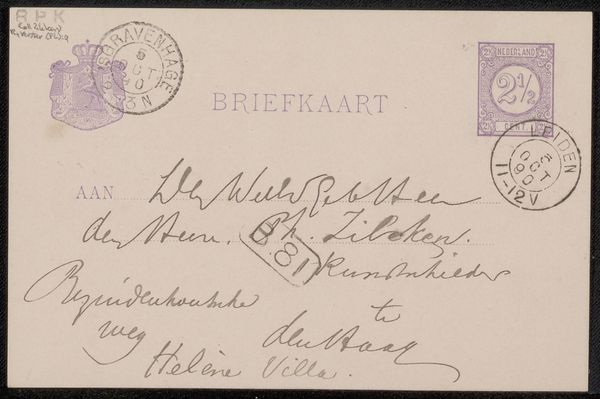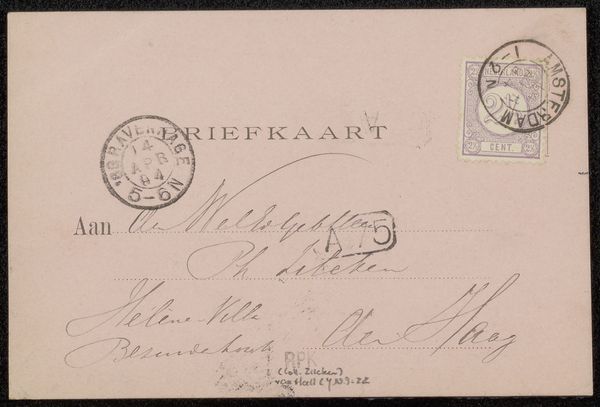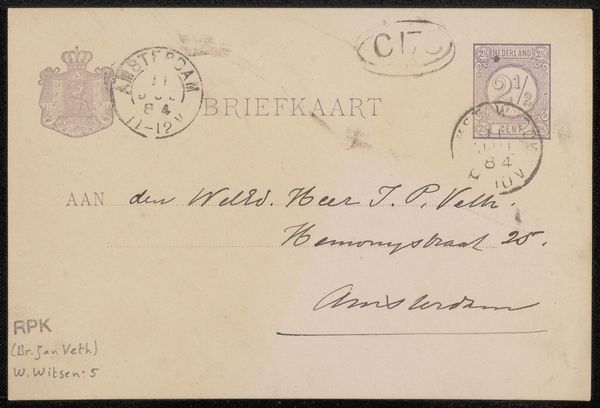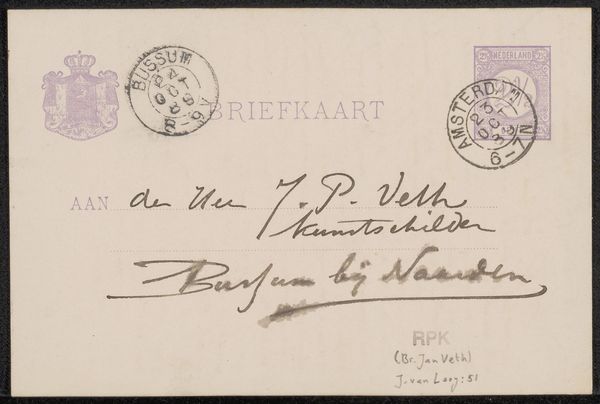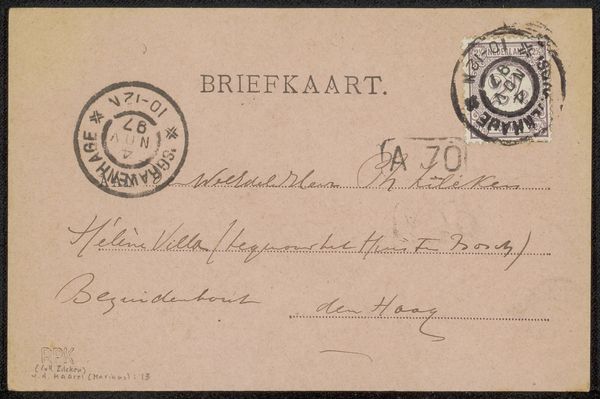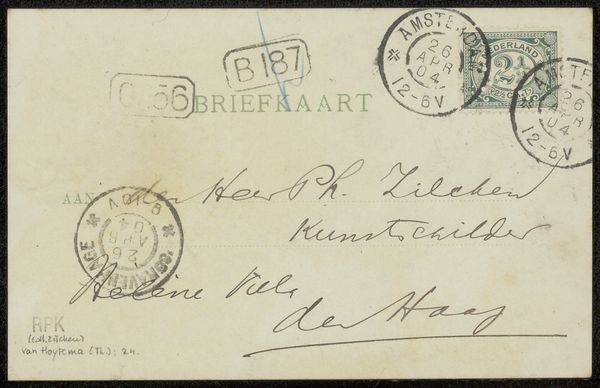
drawing, paper, ink, pen
#
drawing
#
pen illustration
#
pen sketch
#
paper
#
personal sketchbook
#
ink
#
idea generation sketch
#
ink drawing experimentation
#
pen-ink sketch
#
pen work
#
sketchbook drawing
#
pen
#
storyboard and sketchbook work
#
sketchbook art
#
calligraphy
Copyright: Rijks Museum: Open Domain
Curator: This intriguing piece is entitled "Briefkaart aan Philip Zilcken," potentially dating back to 1894, crafted by Jacob Nicolaas van Hall. It's primarily executed in pen and ink on paper. Editor: Immediately, I am struck by the elegance of the handwriting. It creates an immediate impression of formality and delicacy, even if its function is quite mundane. The paper itself looks incredibly aged, soft, a sort of palimpsest. Curator: Indeed. The calligraphic style provides a window into the aesthetic sensibilities of the time, with its flowing lines and disciplined forms. Semiotically, the script performs not just to communicate the text, but embodies and projects refined sophistication. Editor: Considering its context, the postcard as a medium became quite popular for casual correspondence at this time, serving as quick communication while simultaneously functioning as a small collectible. It represents a unique moment in the intersection of art and everyday life; the messages themselves may have been rather unimportant but we can speculate on van Hall's position within an artistic circle. Curator: Van Hall was a well-regarded figure, associated with artistic circles within the Netherlands at the time. So what he has recorded and selected, formally, bears attention. Note the precise control of line weight, as each word assumes a particular balance in tone and in its weight of appearance. It's not just legible, it strives for visual refinement. Editor: And it's addressed to Philip Zilcken, an artist and art critic himself, suggesting an artistic dialogue of some kind, a message shared among cultural elites. Also, observe the placement of stamps and postal markings; they’re incorporated without disrupting the composition’s overall aesthetic, acting like a minimalist collage element. The postal system, as a developing network, also plays a central part in disseminating artistic thought through publications and other printed materials at that period in European culture. Curator: Yes, the markings act almost like compositional elements, anchoring the upper-right visually, and their haphazard, aged placement contrasts well against the deliberately presented address. The work’s formal elements successfully integrate this utilitarian function. Editor: Considering its cultural importance, it makes you wonder about the lives and dialogues woven into what we might dismiss as commonplace objects. I’m more compelled by its narrative potential—its intimate relationship with its creator and the society in which it was crafted. Curator: A telling and formally sophisticated slice of history; well observed!
Comments
No comments
Be the first to comment and join the conversation on the ultimate creative platform.
